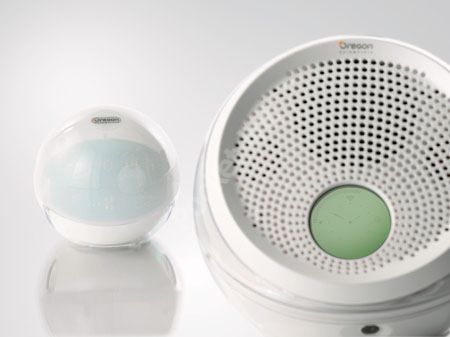American technology manufacturer, Oregon Scientific, have opted to enter the music technology market with their newly created StyleFi brand. The launch consists of four products, a music centre, two takes on a wireless speaker solution and a portable CD player and docking station.
Our quick take
Overall, the design wins over the faff of the cabling. The buzzing, although annoying, can be attributed to absurdities of my apartment and the abundance of the electronics plaguing my waking hours. The multiple inputs coupled with "learning" features make the receiver a practical addition to any home cinema or stereo system, so long as you bare the issue of the battery consumption in mind.
The price is a little on the stiff-side, but you do get options that aren't available though contemporary systems and with the Christmas coin being sought after Oregon might well offer discounts.

Oregon Scientific Music Sphere - 3.5 / 5
| FOR | AGAINST |
|---|---|
|
|
As far as innovation goes the Music Sphere and the iBall are the more interesting of the new range with both products being essentially the same with one being aimed at he Apple iPod market, with its dedicated docking station, although it's the more general version may have wider appeal.
The overall concept of the Music Sphere is simple. A base station, with multiple source inputs, transmits sound to a receiver with a speaker, but the technology that enables this is a little more complex. The system relies on a 2.4Ghz digital audio signal transmitted upto 30 metres via FHSS technology (frequency-hopping spread spectrum).
The transmitter unit, about the size of a grapefruit, runs off mains power and will accept up to three separate music sources via two small jack plugs (headphone ports) and one set of phono sockets.
The larger receiver, about the size of a netball (W203mm x H187mm x D196mm), houses a pair of stereo tweeters and a subwoofer, capable of outputting a respectable 60db in total.
The top of the receiver houses a control panel used to switch sound sources, set clock functions and audio sound balance and activate the receivers remote control "learning" function. Power options are varied with the choice of either the mains, via an adapter, or six C-cell batteries.
A special finger hole is available to aid mobility, although audiophiles will later tell me this is part of the speaker system and I should not be putting anything, least of all my finger, in it. For those with a more permanent location in mind the receiver can also be wall mounted on the provided bracket.
The receivers overall design is simple, yet striking. Details such as the colour of the digital display, on the front of the receiver, changing from red to blue to green dependant on the audio source selected and the ability to teach the receiver the basic functions of the audio sources remote controls, get a special mention.
Low-level buzzing, battery life of the receiver unit and input connections are all contends for why you should spend your hard earned cash on this device. Even though Oregon has spent time, and Dollars, on the FHSS system I still got a low-level buzz through the speaker. This may well be due to a lot of other wireless technology competing for the airwaves in my apartment, but when the volume was turned up this became an annoyance.
Even though the receiver can be battery powered the accompanying literature paints a less than rosy picture of the longevity of this endeavor. Oregon estimate that a new set of six C-cells will last 5 days with an average of 4 hours play a day. So if you want to be totally wireless be prepared to buy a lot of batteries.
The transmitters connection offering of headphone jacks and phono seem to beg the question "what type of devices Oregon expect the user to attach?" My understanding of a technology like this would be to offer a connection that is additional to the audio sources primary speakers, rather than instead of them. When connecting either my computer or stereo, I used the headphone-out socket to the phono-in, via the cable provided. Problem is, to then use the main speakers, on either of the source devices; I have to unplug the jack from the headphones socket, making the whole endeavor complicated.
To recap
A nice visual design, combined with flexibility of power source, location and multiple source inputs, a useful addition towards the
